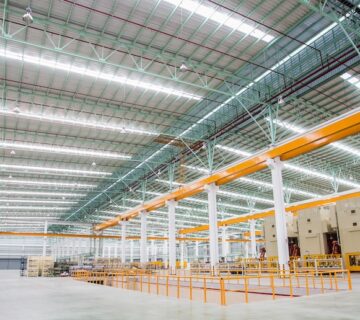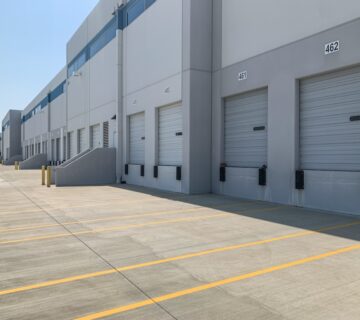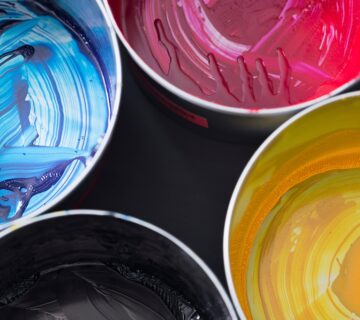When contemplating painting your house, you’re confronted with a significant decision: should you tackle the project yourself or enlist the expertise of professional painters? While the prospect of DIY painting may appear initially cost-effective, a deeper examination reveals a multitude of factors that influence the true cost. This blog aims to conduct a thorough cost analysis of DIY painting versus the option of hiring professionals, equipping you with the insights needed to make a well-informed decision tailored to your budget, skills, and project requirements. Considering the nuances of both approaches ensures that you can achieve the desired outcome efficiently and effectively.
Cost Elements of DIY Painting
Material Costs
The most apparent cost of DIY painting is the materials. This includes paint, primer, brushes, rollers, painter’s tape, drop cloths, and other supplies. High-quality paint can be costly, but it offers better coverage and durability. Don’t forget to factor in any tools you might need to buy or rent, like ladders or a paint sprayer. Additionally, consider the quantity of materials needed to ensure proper coverage for your project size. Take into account the brand and quality of paint and tools, as well as any discounts or deals available when purchasing supplies.
Time Investment
Time is a significant cost in DIY projects. Painting can be time-consuming, especially if you’re inexperienced. Prep work like cleaning, taping, and priming adds to the time investment. If your time could be better spent on other activities, this is an important factor to consider. Calculate the hours required for each step of the painting process, from preparation to cleanup, to accurately assess the time commitment involved. Consider the opportunity cost of your time, including the value of potential income or leisure activities foregone during the painting project.
Quality and Skill Level
While saving money is a plus, the final result may not match professional quality, especially if you lack experience. Mistakes or uneven application can lead to additional costs for fixes or even a complete redo. Consider your painting skills and whether you have the expertise to achieve the desired outcome. Factor in the potential cost of correcting mistakes or hiring professionals to redo the job if necessary. Assess your comfort level with DIY projects and the level of precision required for your painting project.
Cost Elements of Hiring Professionals
Labor Costs
The most significant cost of hiring professionals is labor. This varies based on location, the size of the project, and the complexity of the job. Professional painters can efficiently handle prep work, painting, and cleanup, which can be particularly beneficial for large or intricate projects. Obtain quotes from multiple painting contractors to compare labor costs and ensure you’re getting a competitive rate. Factor in the experience and expertise of the painters, as well as any additional services included in the quote, such as surface preparation or minor repairs.
Material and Equipment Inclusion
Many professional painters provide their own high-quality materials and equipment, which can be more cost-effective than purchasing them for a one-time job. This also ensures the use of the right tools and materials for the best outcome. Inquire about the materials and equipment included in the painter’s quote to determine the overall cost-effectiveness of hiring professionals. Consider the quality and brand of materials used by the painters, as well as any warranties or guarantees offered for their workmanship.
Efficiency and Quality
Professionals bring experience and expertise, which often translates to a quicker job and high-quality results. They can efficiently tackle challenges like high ceilings or intricate trim work, and their experience can yield a more polished look with lasting durability. Consider the value of professional expertise and the potential long-term savings associated with a job done right the first time. Evaluate the reputation and track record of the painting company, including reviews from past clients and examples of their previous work, to ensure they deliver the quality and reliability you expect.
Evaluating the Trade-Offs
Cost Comparison
DIY painting can be less expensive upfront, especially for smaller projects. However, for larger or more complex projects, the efficiency and quality of professional work can offer better value in the long run. Compare the total cost of DIY painting, including materials and potential fixes, with quotes from professional painters to determine the most cost-effective option for your project. Consider the long-term value of professional expertise and the potential savings on future maintenance or repairs.
Risk and Convenience
DIY projects carry the risk of mistakes or accidents, which can incur additional costs. Hiring professionals alleviates the stress and risks associated with painting, especially in challenging areas like exteriors or high ceilings. Consider the potential cost of mistakes and the convenience of hiring professionals to handle the job safely and efficiently. Assess the level of risk associated with your painting project, including safety hazards and potential damage to surfaces or belongings, and weigh it against the convenience of professional services.
Time vs. Money
Consider the value of your time. If DIY painting takes away from other important activities or responsibilities, the time cost might outweigh the savings. Factor in the opportunity cost of DIY painting, including time spent learning new skills, purchasing materials, and completing the project, compared to the convenience of hiring professionals to handle the job from start to finish. Evaluate the balance between time and money, considering both the immediate cost savings and the long-term benefits of professional expertise and efficiency.
Final Thoughts
Deciding between DIY painting and hiring professionals depends on various factors including cost, time, skill level, and the scale of the project. DIY can be more cost-effective for small, straightforward projects, but for larger, more complex jobs, the efficiency, convenience, and quality of professional painters often justify the extra expense. Whichever option you choose, ensure it aligns with your budget, time availability, and desired outcome. Evaluate the trade-offs carefully to make the best decision for your painting project. Consider consulting with painting professionals to assess your options and get expert advice tailored to your specific needs and preferences. For more insights into home painting and renovation, visit our website at sisupainting.com and check out our blog at sisupainting.com/blog.





No comment